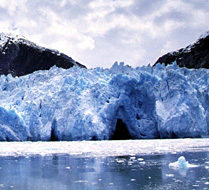One can see from space how the human race has changed the earth. Nearly all of the available land has been cleared for agriculture or urban development. The polar ice caps are shrinking and the desert areas are increasing. At night the earth is no longer dark, but lit up. All this is evidence that human exploitation of the planet is reaching a critical limit, but human demands and expectations are ever increasing. —Stephen Hawking, cosmologist.
Some people suggest that in order to live sustainably we have to go out in the woods and put on animal skins and live on roots and berries. And the simple reality is that we do have technology. The question is, how can we use our understanding of science and our understanding of technology along with our understanding of culture, and how culture changes, to create a culture that will interact with science and with the world around us in a sustainable fashion? —Thom Hartmann, broadcaster, educator, businessman.
The great thing about the dilemma we're in is that we get to reimagine every single thing we do. In other words, there isn't one single thing that we make that doesn't require a complete remake. And so there are two ways of looking at that. One is like: Oh my gosh, what a big burden. The other way to look at it, which is the way I prefer, is: What a great time to be born! What a great time to be alive! Because this generation gets to essentially completely change this world. —Paul Hawken
We're at a point in our history, with 6.4 billion of us, that we have to imagine what it would be like to redesign design itself, see design as the first signal of human intention, and realize that we need new intentions for our future where materials are seen as things that are highly valuable and need to go in closed cycles—what we call cradle to cradle, instead of cradle to grave. And we have to agree that energy needs to come from renewable sources, principally the sun, and that water needs to be clean and healthy as it comes in and out of the system, and that we should treat each other with justice and fairness. So, the design itself changes from mass production of things that are essentially destructive to mass utilization of things that are inherently assets instead of liabilities. —William McDonough, architect and designer.
How we make things in our industrial process is a 180-degree difference from how life makes things. Look at how we make, for instance, Kevlar, which is our toughest material. We take petroleum, we heat it up to about 1,400 degrees Fahrenheit, we boil it in sulfuric acid, and then we pull it out under enormous pressures. Now, imagine us making our bones or our teeth, or imagine an abalone making a shell. Abalones can't afford to heat it up to really high temperatures or do pressures or do chemical baths, so they've found a different way. Now take the spider. This beautiful orb-weaver spider is basically taking flies and crickets and transforming them in water in the abdomen and what comes out is this material that's five times stronger ounce for ounce than steel. Silently, in water, at room temp. I mean, this is master chemistry, and this is manufacturing of the future, hopefully. And there are actually people who are now trying to mimic the recipes of these organisms. Beautiful architecture and incredible manufacturing and we're starting to learn how to mimic that. —Janine Benyus, co-founder, the Biomimicry Guild.
If we think about the tree as a design, it's something that makes oxygen, sequesters carbon, fixes nitrogen, distills water, provides a habitat for hundreds of species, accrues solar energy, makes complex sugars and food, creates micro-climates, self-replicates. So, what would it be like to design a building like a tree? What would it be like to design a city like a forest? So what would a building be like if it were photosynthetic? What if it took solar energy and converted it to productive and delightful use? —William McDonough
This country can move awfully fast, if it wants to. Keep in mind that after December 7, 1941, Roosevelt went to Jimmy Byrnes and said, You're my deputy president for mobilizing the economy. Anybody crosses you, they cross me. Within six months, Detroit was completely retooled, not making cars anymore, making military trucks, tanks, fighter aircraft, and in three years and eight months from the beginning of that war, we had mobilized, we had defeated imperial Japan, Fascist Italy, Nazi Germany, together with the British and our other allies, and had begun demobilization. Three years and eight months. —R. James Woolsey, former director of the C.I.A.
 Hot
Water Ahead: Global Warming and Oceans
Hot
Water Ahead: Global Warming and Oceans
